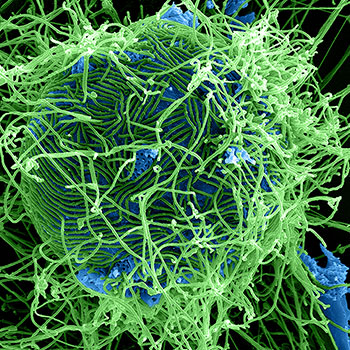Why are signal transduction pathways often so complex?
1 Answer
Are they?
Explanation:
At first glance signalling pathways do look complex, but once you look at them closely you will see that there are a lot of underlying themes and ideas, that are often reused.
Some examples:
A lot of pathways follow the receptor -> transduce -> effector model. For example, G-protein coupled receptor -> G-protein -> adenylyl cyclase. The receptor type can be many, and the G-protein can be many. However, the net result is a change in cAMP levels (adenylyl cyclase makes cAMP).
Phosphorylations are used for regulation - a phosphorylation can activate or deactivate a protein. Kinases add a phosphate group, phosphatases remove phosphate groups.
Signals are often amplified - one molecule binds to and activates one receptor, one receptor can activate many downstream molecules. One to many.
There are also a number of other underlying themes and ideas, such as translocations, cross-talk etc.

